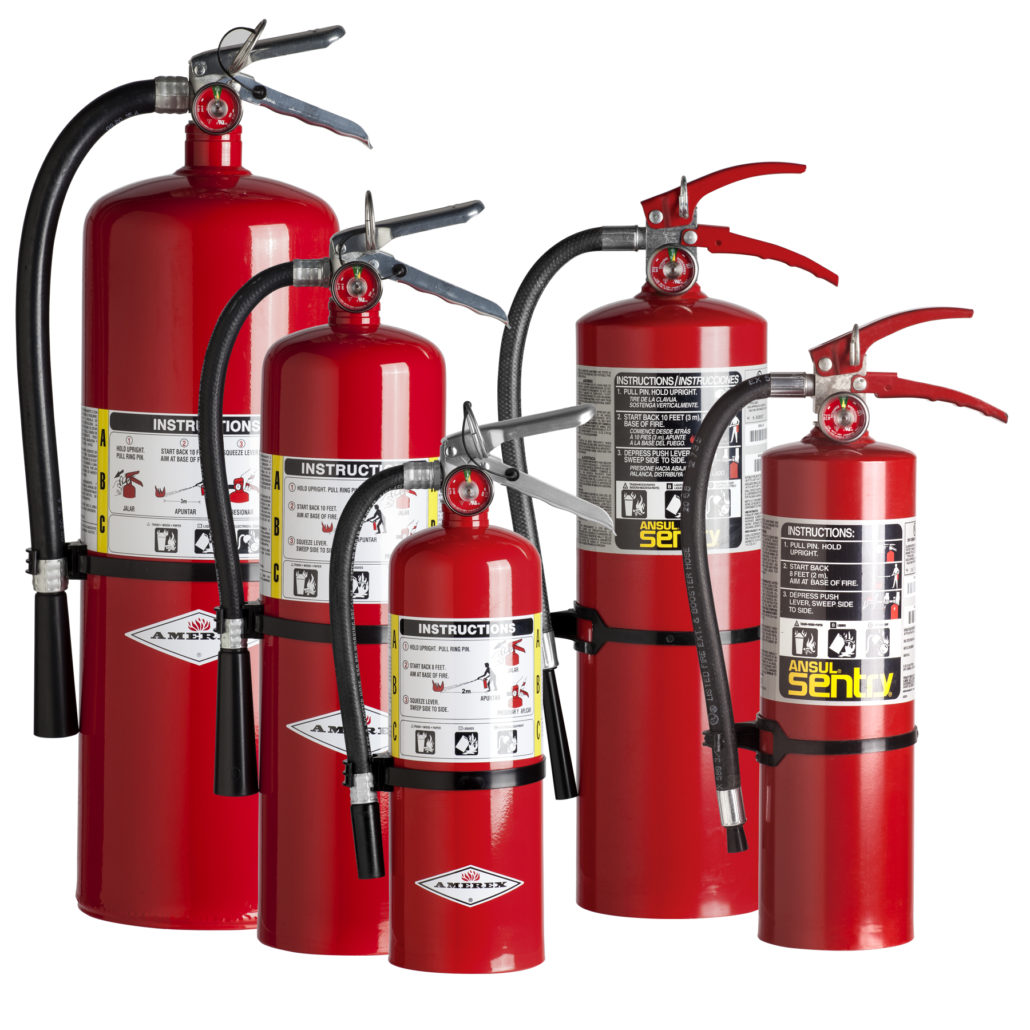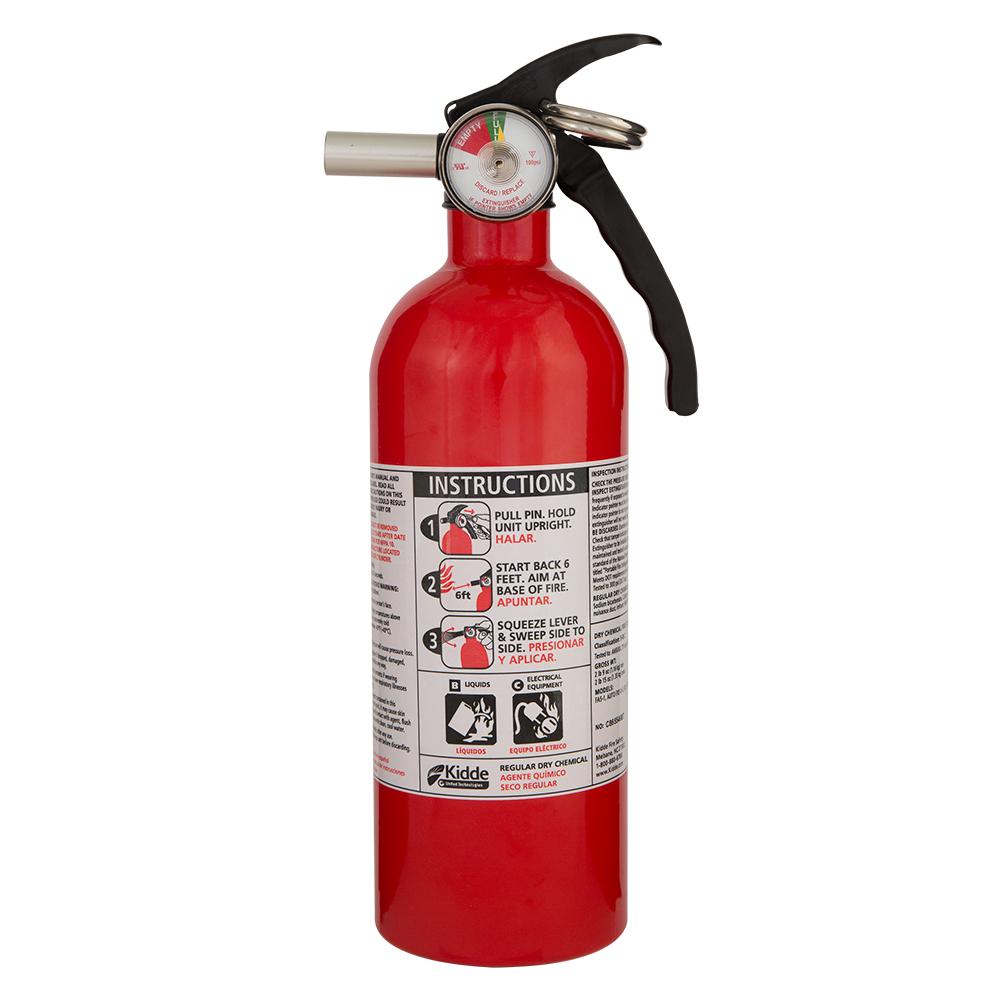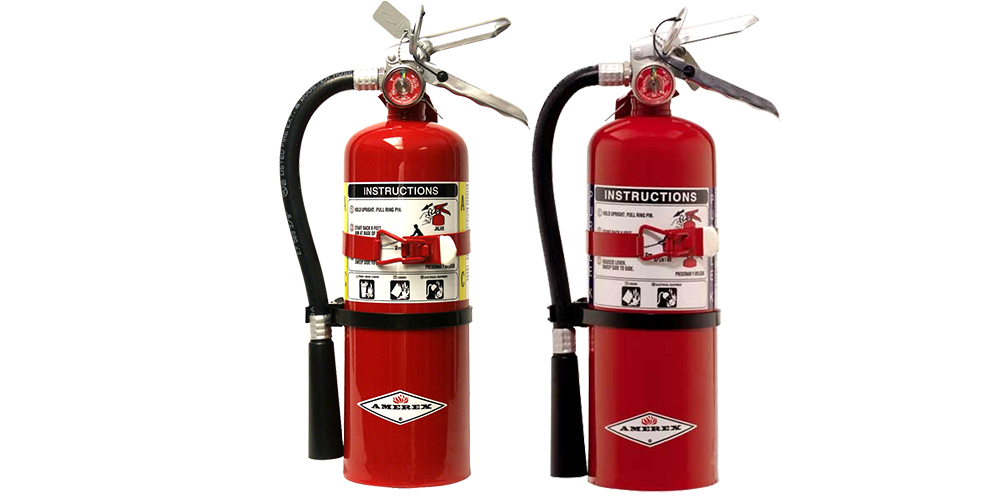

This type of fire extinguisher releases microscopic water molecules that fight the fire on various levels. It uses a newer technology that works on most classes of fire. This is the most versatile out of all the six different types. Additionally, they can also be used on class A fires (wood, paper, fabrics) and class B fires (flammable liquids). This type of fire extinguisher is commonly used in class F fires involving cooking oils and fats. Wet chemical is a new agent that extinguishes the fire by removing the heat of the fire triangle and prevents re-ignition by creating a barrier between the oxygen and the fuel elements. This is ideal for class B fires that involve flammable liquids and on class E electrical fires.

It uses carbon dioxide to remove oxygen from the fire, leaving the fire to be effectively suffocated. This is one of the cleanest fire extinguishers out there as it leaves no residue and requires no cleanup. This chemical acts as a blanket to suffocate and extinguish the fire very effectively.Ĭan you guess which class(es) of fire this fire extinguisher is designed for based on its oh-so-revealing name? Yes, you guessed it right, this one is perfect for use on class A, class B, and class C fires, which makes it the standard fire extinguisher for home use. An ABC powder fire extinguisher sprays a very fine chemical powder composed most commonly of monoammonium phosphate. This type of fire extinguisher is very handy in most situations due to its multi-purpose properties. Now that we’ve covered the basics, let’s move on to the different types of fire extinguishers.

Before we dive into the different types of fire extinguishers, it is essential to understand the six classes of fire. There are many different types of fire extinguishers to effectively treat different classes of fire. Here’s a simple breakdown of the six types of fire extinguishers and everything you need to know about them. However, not many people realize that a single type of fire extinguisher does not work on all types of fires. Water These extinguishers contain water and compressed gas and should only be used on Class A (ordinary combustibles) fires.Everybody knows how important a fire extinguisher is in case of an emergency. Since the fire could re-ignite, continue to apply the agent even after the fire appears to be out.įoam Simple to operate with seize & squeeze operation, ideal for use against A & B fires, highly effective against Flammable liquid Fires, ideal for garages, kitchens and multi risk premises. The cooling will often cause ice to form around the “horn" where the gas is expelled from the extinguisher. The carbon dioxide is stored as a compressed liquid in the extinguisher as it expands, it cools the surrounding air. Since the gas disperses quickly, these extinguishers are only effective from 3 to 8 feet. They contain an extinguishing agent and use a compressed, non-flammable gas as a propellantĬarbon Dioxide (CO2) extinguishers are most effective on Class B and C (liquids and electrical) fires. In this example, the fire extinguisher could be used on Ordinary Combustibles and Flammable Liquids fires, but not for Electrical Equipment fires.ĭry Chemical extinguishers are usually rated for multiple purpose use. This is labeling style with a diagonal red line drawn through the picture to indicate what type of fire this extinguisher is NOT suitable for.

This style of labeling that shows this extinguisher may be used on Ordinary Combustibles, Flammable Liquids, or Electrical Equipment fires. Make sure that if you have a multi-purpose extinguisher it is properly labeled. Many extinguishers available today can be used on different types of fires and will be labeled with more than one designator, e.g. These extinguishers generally have no rating nor are they given a multi-purpose rating for use on other types of fires. There is no picture designator for Class D extinguishers. The presence of the letter “C" indicates that the extinguishing agent is non-conductive.Ĭlass D Extinguishers are designed for use on flammable metals and are often specific for the type of metal in question. This class of fire extinguishers does not have a numerical rating. The numerical rating for this class of fire extinguisher states the approximate number of square feet of a flammable liquid fire that a non-expert person can expect to extinguish.Ĭlass C Extinguishers are suitable for use on electrically energized fires. The numerical rating for this class of fire extinguisher refers to the amount of water the fire extinguisher holds and the amount of fire it will extinguish.Ĭlass B Extinguishers should be used on fires involving flammable liquids, such as grease, gasoline, oil, etc. Class A Extinguishers will put out fires in ordinary combustibles, such as wood and paper.


 0 kommentar(er)
0 kommentar(er)
